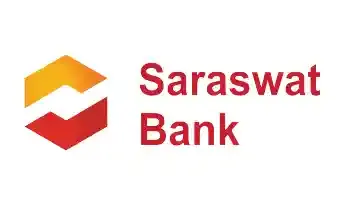Get instant loan offer suitable to your profile !


On this Page:
Read GyanDhan’s guide on what is mandate amount in loan along with its maximum amount, process, limit, eligibility and benefits.
The mandate amount in loans refers to an authorized sum that borrowers agree to allow lenders to debit from their accounts, typically for the repayment of loans. This process is facilitated through an electronic mandate or e-mandate, which is a digital version of standing instructions given to banks. It represents a shift towards more automated, secure, and efficient means of managing recurring payments, such as loan EMIs (Equated Monthly Installments).

The mandate amount refers to the specific amount of money an individual or organization consents to have automatically withdrawn from their bank account. This consent is part of setting up an AutoPay or payment mandate with a service provider. By defining a mandate amount, the account holder authorizes the periodic automatic transfer of this predetermined sum from their account, which could occur on a monthly, quarterly, or yearly basis.

The term "AutoPay or Mandate limit" denotes the highest amount that is permitted for automatic withdrawal from an account holder's bank through a pre-established automated payment system. This limitation acts as a protective measure to avert any unauthorized or overly large withdrawals from the account. By establishing such a limit, the account holder retains oversight of the maximum sum that can be debited via AutoPay, thereby safeguarding their financial stability.

The upper limit for a mandate can differ based on various elements, such as the specific rules of the banking institution and the contractual terms agreed upon by the account holder and their service provider. Often, it's up to the account holder to decide on the maximum amount for the mandate, enabling them to choose a ceiling that is within their financial means and suits their preferences. Nonetheless, to manage risk and safeguard their clients, banks might also set predetermined limits on these amounts.

Here's a simplified explanation of how e-Mandates function:





This process streamlines transactions, making it easier for both parties to manage recurring payments securely and efficiently.

To utilize the e-mandate facility, borrowers must have a bank account with a bank that supports e-mandates and meet certain eligibility criteria, such as linking their Aadhaar to their bank account. Setting up an e-mandate involves a simple online process, where borrowers authorize their bank to allow automatic debits by providing their bank account or debit/credit card details.

The Reserve Bank of India (RBI) has introduced new guidelines to enhance the security and efficiency of e-mandates for recurring transactions. These include the requirement for additional factor authentication (AFA) for transactions above a certain threshold and advance notifications to customers before debiting their accounts. These guidelines aim to protect consumer interests while ensuring a smooth process for recurring payments.

E-Mandate systems offer several advantages for both borrowers and lenders. For borrowers, it simplifies the repayment process, ensuring timely payments without the need for manual intervention every month. This automation reduces the chances of missed or late payments, potentially improving the borrower's credit score. From a lender's perspective, e-mandates facilitate efficient, secure, and cost-effective collection of repayments, enhancing operational efficiency.
The mandate amount in loans and the e-mandate system represent significant advancements in the way financial transactions are conducted. They offer convenience, security, and efficiency, benefiting both borrowers and lenders. Understanding these concepts ensures that borrowers can navigate their financial obligations with greater ease and confidence, keeping them well-informed about the mechanisms that govern their loan repayments.

If the bank account doesn't have enough money, the e-mandate transaction won't go through and will be unsuccessful. Under these circumstances, it's important for the account owner to make sure their account has enough funds to prevent the transaction from failing.
Account owners can review their e-mandate arrangements by accessing their bank's online banking platform and navigating to the "E Mandate" section. Here, they can examine the specifics of their e-mandates, such as the name of the beneficiary, their account details, and the transaction frequency.
The duration required to complete an e-mandate setup largely depends on the processing times of both the initiating and receiving banks. Typically, e-mandates are established within a timeframe of 1 to 2 business days.
Setting up an e-Mandate is a straightforward procedure that requires completing a form and submitting the requisite information. This process can slightly differ based on the specific bank or service provider involved.
Check Your Education Loan Eligibility

Ask from a community of 10K+ peers, alumni and experts
Trending Blogs
Similar Blogs

Network with a community of curious students, just like you
Join our community to make connections, find answers and future roommates.. Join our CommunityCountry-Wise Loans
Best Lenders for Education Loan

ICICI Bank

Axis Bank

Union Bank

Prodigy

Auxilo

Credila

IDFC

InCred

MPower

Avanse

SBI

BOB

Poonawalla

Saraswat